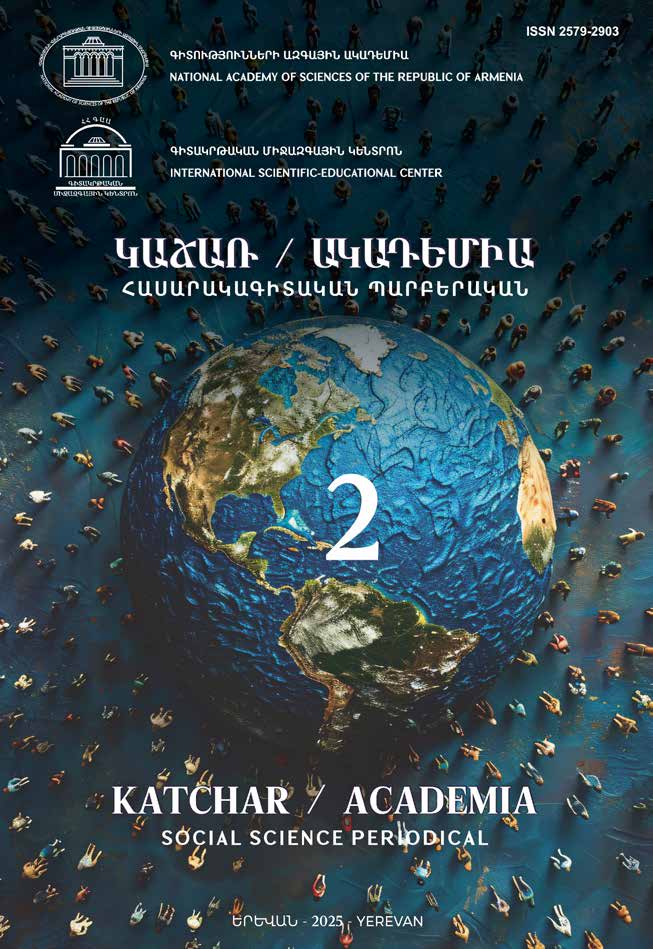METHODOLOGY FOR ASSESSING THE SEMANTIC ORIENTATION OF VICTIMHOOD
DOI:
https://doi.org/10.54503/2579-2903-2025.2-71Keywords:
victimhood, semantic orientation, victim perception, gender differences, self-expression, defense mechanisms.Abstract
The article provides a comprehensive analysis of the evolution of victimology theory and its semantic transformation, tracing its development from philosophical and criminological foundations to the complex psychological and socio-cultural domains. It highlights a paradigmatic shift in the perception of the victim—from being defined by objective external factors to being understood as a multidimensional psychological phenomenon shaped by the interaction between unconscious intrapersonal processes and prevailing social norms.
A study conducted within the Armenian societal context aims to explore the psychological components underlying the perception of victimhood. Particular attention is given to deeply rooted stereotypes and defense mechanisms that influence victim perception, underscoring the significance of both social and individual factors in shaping victim-related attitudes.
The article places particular emphasis on the interaction between the victim’s psychological state, self-perception, and external environmental responses—an interplay that deepens the contextual understanding of victimhood. The findings suggest that perceptions of victim vulnerability are shaped through the dynamic interplay of socio-cultural norms and individuals’ internal psychological processes. Moreover, the data reveal distinct gender-based patterns in responses to victimhood, underscoring the role of gender as a significant variable in shaping attitudes toward victims. Women tend to approach victims with greater empathy and understanding, whereas men more frequently exhibit critical or dismissive attitudes toward vulnerability—responses often linked to varying manifestations of psychological defense mechanisms. These differences provide a critical foundation for developing gender-sensitive support strategies that integrate both psychological and social approaches.
Finally, the article highlights the importance of conducting further research involving participants from different age groups, which would allow for a more comprehensive and multilayered understanding of the perception of victimhood. Such an approach could facilitate the optimization of support mechanisms by considering both societal and psychological characteristics and needs.
This study represents a significant contribution to the contemporary scientific exploration of victimhood, as it may inform the development of innovative strategies for victim perception and support. These approaches aim to enhance psychological well-being, grounded in the principle that a mentally healthy individual constitutes the cornerstone of a healthy society and stable social relationships.
The theoretical and practical strategies developed within this research are crucial for helping victims regulate and maintain emotional stability, facilitating their self-expression and social integration. Consequently, these strategies can significantly enhance the effectiveness of social support systems and promote overall mental well-being.

Downloads
Published
How to Cite
Issue
Section
License
Copyright (c) 2025 KATCHAR / ACADEMIA. SOCIAL SCIENCE PERIODICAL

This work is licensed under a Creative Commons Attribution-NonCommercial-NoDerivatives 4.0 International License.



